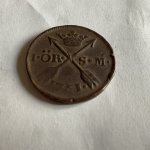Old Bookaroo
Silver Member
- Dec 4, 2008
- 4,318
- 3,510
I'd like to take the wooden stake out of the heart of this Thread to ask if anyone remembers the title of the book (I believe it was recommended by "gollum") that was useful in researching Jesuit treasures. I'm sure it was not the Relations - but I can't recall the name and I can't find the reference to it here on TN.
Thank you!
Good luck to all,
The Old Bookaroo
Thank you!
Good luck to all,
The Old Bookaroo




 We are bracing for a good healthy dose of the nastiest mix of weather starting tomorrow, hope it will be just rain but not counting on that either. Side thing but we have a new member of the 'pack' too, will have to send you a photo sometime, she is quite the little pistol. Give our love to Carolyn and Smoky, <and you of course!> and hope you have a great day tomorrow.
We are bracing for a good healthy dose of the nastiest mix of weather starting tomorrow, hope it will be just rain but not counting on that either. Side thing but we have a new member of the 'pack' too, will have to send you a photo sometime, she is quite the little pistol. Give our love to Carolyn and Smoky, <and you of course!> and hope you have a great day tomorrow.



